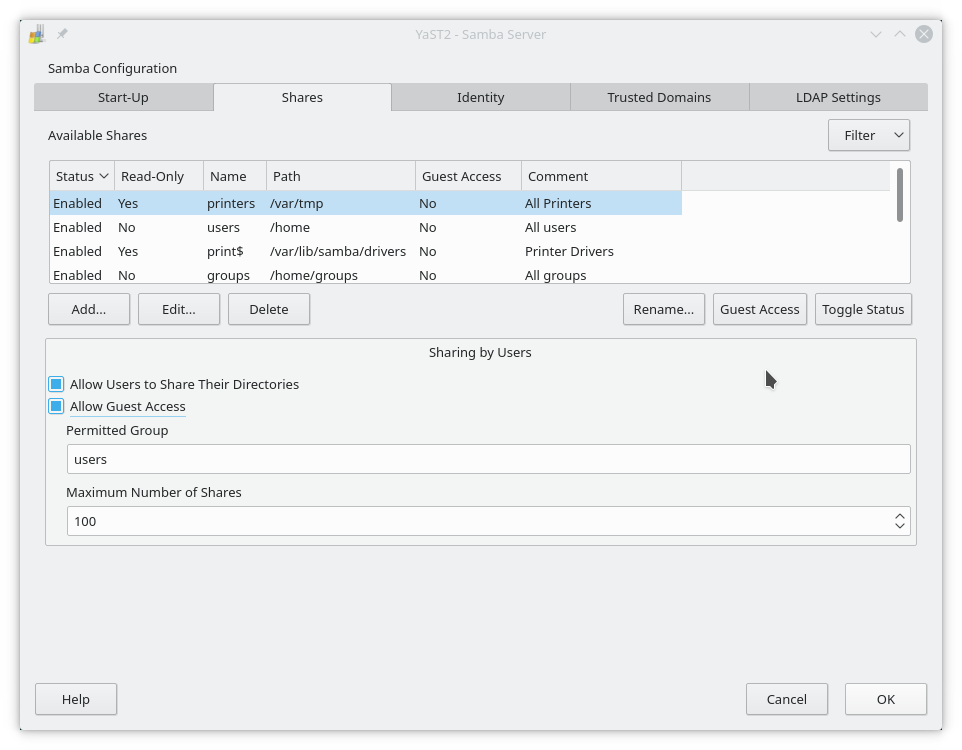

- UBUNTU 12.04 SAMBA SERVER HOW TO
- UBUNTU 12.04 SAMBA SERVER INSTALL
- UBUNTU 12.04 SAMBA SERVER SOFTWARE
Now, before accessing the shared folder, you need to create a Samba user on Samba server Ubuntu.Now, add the folder you want to share and grant the access to it.
UBUNTU 12.04 SAMBA SERVER INSTALL
“sudo apt-get install system-config-samba”

UBUNTU 12.04 SAMBA SERVER SOFTWARE
The first thing to do is to install Samba from Software center in Ubuntu.Samba is not installed on your Ubuntu operating system.
UBUNTU 12.04 SAMBA SERVER HOW TO
This tutorial will show you how to install Samba server Ubuntu 13.10 Salamander, and its complete functionality. Now you can access the Ubuntu folders from another Linux-based system or Windows OS. However, Samba uses the simple file sharing protocol to enable your Ubuntu device for sharing files and folders, just like a Windows PC.

It can also accept connections from other PCs. The Nautiilus File Manager is provided with a series of connection protocols for accessing files on a remote server. It is a great replacement for Nautiilus File Manager that has limited capabilities. This utility converts Ubuntu into a file server for easy access from a Windows PC. The Ubuntu Samba server is quite valuable in sharing files with Windows clients. One of the easiest ways to network Ubuntu and Windows computers is to utilize Ubuntu Samba share functionality. cat /proc/mdstat is your friend here, watch cat /proc/mdstat is even more useful (especially to monitor the recovery).Install and Configure Ubuntu Samba for Ubuntu File Sharing -Guide What is Samba Server? You'll need to be able to work out which disk has gone just from the descriptions that mdadm gives you. Test everything before you start to put any real data on the disks - especially test and get familiar with what happens when one of the disks disappears. There's a lot of commands here, too many to give detailed answers for, but hopefully this will get you started in the right direction and you can specific questions about the steps if you find you get into trouble. Somewhere inside the /mnt/ structure is probably a good place to first think about doing this.įinally, if you want to have it auto-mount when the machine starts then look at the fstab file. You should probably go for ext4.įinally, to use it you'll need to create a folder where you want it to appear and then use the mount command to make it available. After you have that done you can create a file system on it by using the mkfs command.

Once you have the array set up you'll need to use parted (normal partition) or pvcreate, vgcreate then lvcreate (LVM) to set it up. Every time I use it I seem to have to start at the beginning trying to work it out - it's certainly not intuitive (I always think of it as "mad admin" because if it doesn't make you mad at least once you're probably doing it wrong). You can clear mdadm configuration from a drive by clearing the superblock on the drive (you'll find it somewhere in the commands). It's a nightmare to use so expect to get things wrong and have to restart several times. For building the raid array you'll need to use mdadm command.


 0 kommentar(er)
0 kommentar(er)
